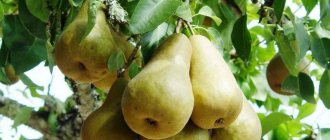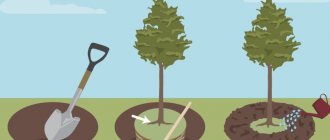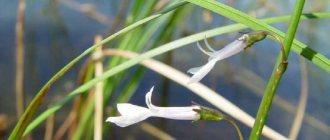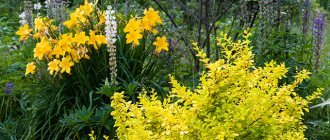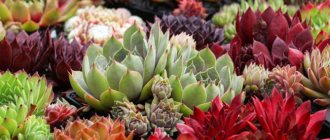Home » Garden and vegetable garden » Fruit trees
Vladimir 10/09/2019
4078 Views
Pear - Planting and growing
Planting and caring for a pear is a pressing issue for all fruit tree lovers. Especially in the spring, when the earth has already warmed up. And seedlings began to be sold in markets, nurseries and garden centers. In autumn, the choice of seedlings is also rich. Therefore, if it was not possible to plant a tree in the spring, this can be done in mid-late September.
You need to be as responsible as possible when choosing young pear trees. Both soil preparation and subsequent tree care are of great importance. You need to know how and when to water a pear, how and with what to fertilize, how to prune. The article discusses all aspects of growing pears on a personal plot. From buying seedlings to ways to propagate trees.
Origin of the pear tree
The pear became known as one of the most valuable and carefully cultivated trees in the ancient Roman garden.
It is the most important fruit tree after the apple tree. Thanks to the presence of different varieties, you can enjoy its fruits most of the year.
Pears, with the exception of some varieties, usually bear fruit annually. In most cases, pear trees do not tolerate frost well and are not very resistant to disease.
More sensitive varieties must be grown under the supervision of experienced specialists. Unlike apples, pears prefer slightly warmer regions.
Regulation of ovaries
What to do with buds on a pear.
A small tree independently regulates the number of ovaries. It discards excess buds that it cannot feed. But gardeners need to monitor the condition of the tree more carefully.
It is better to leave a pair of ovaries on each skeletal branch of a young tree. The tree will definitely be able to saturate this amount with useful substances. For the next year of fruiting, you can already leave a few fruits.
Proper pruning
The pear tree bears fruit cyclically, so one of the methods for regulating the ovaries is proper pruning. The culture does not accept radical pruning; fruiting may suffer as a result.
Characteristics of the pear tree
Pear is a tree up to 20 m tall. The crown is pyramidal and dome-shaped in old trees. With age, the bark becomes gray-black, cracked and peeled off in the form of relatively regular rectangles.
The leaves are arranged parallel, small, up to 4 cm, oval, at first slightly pubescent, light green, then glabrous and green. Flowers in umbrella clusters, white petals. The fruit is green, yellow or red. The fruits of fruit varieties are much larger than others. Inside the fruit contains several flat seeds.
- The tree is a long-liver, can grow up to 300 years. It blooms in late April - early May with the development of leaves.
- Ripe fruits are tasty and juicy, but often tart. The fruits are usually called pears.
- They can be eaten and also used to make liqueurs and wine.
- Wood is used in the production of drawing instruments, musical instruments, in the furniture industry, in sculpture and in the production of panels.
Description
Pear Talgar beauty
The common pear, along with Apple and Cherry, is one of the three most common fruit crops in horticulture. The first mentions of the plant are found in ancient Greek literature. It is likely that Pear has been grown since time immemorial. However, the geographically precise place of origin of the species is unknown. The tree has a taproot system. The roots tend to penetrate into the deeper layers of the soil; in the upper layers there is weak branching. The common pear has a strong and thick trunk. As they mature, the smooth bark darkens and wrinkles. Prostrate and erect thorny branches covered with dense foliage form a rounded or pyramidal crown.
The leaves are arranged in several rows in a spiral. They sit on short petioles and are covered with light fluff when blooming. The leaf blades have a rounded-ovate or oval shape. The dark green color of the foliage changes to yellow-red in autumn.
The common pear blooms in early spring before the leaves appear. Small flowers with white petals are collected in umbrellas. Flowering lasts up to two weeks. This plant is one of the honey plants.
Elongated fruits with an expanded lower part appear from August to October. The colors are in green, yellow and red tones. Soft, juicy, tasty and very healthy pears are actively used in cooking and folk medicine.
The common pear is a plant for the southern regions. Over the years, many frost-resistant varieties have been bred, thanks to which the growing area has expanded to the Urals and Western Siberia. The decorative value of the tree cannot be neglected - tapeworms and group plantings look spectacular during flowering.
Pear varieties
Pear varieties are divided primarily according to the timing of fruiting: summer, autumn and winter. The last fruits are collected from winter varieties, which produce a harvest in October.
Summer varieties include, in particular, July Rannyaya and Favoritka. These are the first pears to appear of the year, are relatively small and have a medium flavor. The favorite is much juicier and sweeter; they are harvested in mid-August.
The first autumn fruit is the Boncret Williams pear tree from England. Its fruits are also very tasty, although it does not bear a harvest every year. Other autumn varieties are Conference and Lukashovka. Their fruits ripen in late September and early October. There are also a number of other varieties.
- The latest fruiting pears include as many as three varieties from France: Parisian and General Leclerc.
- In addition to them, the Australian variety Triumph Pakgama, the Czech Erica, and the English Concord bear fruit. These varieties have different shelf life.
- Eric's pears can be stored even until January, and some others a few days after picking from the tree - that's how long it takes for them to become soft.
It all depends on the variety, so these dates can vary significantly.
Wild pears are not very tasty - they are mainly used to make juices and jams.
What year after planting does the tree begin to bear fruit: varietal characteristics
Below is the age at which some popular pear varieties begin to bear fruit in alphabetical order:
- Annushka - 1-2 years after planting;
- Bergamot - for 7-8 years;
- Bere Bosk - for 6-7 years;
- Seedless - at 8-9;
- Veles - for 5-7 years;
- Victoria - for 6-7 years;
- Williams - for 5-6 years;
- Children's - for 4-5 years;
- Duchess - for 5-6 years;
- Forest beauty - for 6-7 years;
- Limonka - for 7-8 years;
- Honey - for 3 years;
- Moldavian early - for 3-4 years;
- Nika - for 5-6 years;
- November - for 3-4 years;
- In memory of Yakovlev - for 3-4 years;
- Petrovskaya - for 3-4 years;
- Pushkinskaya - for 4-5 years;
- Rogneda - for 3-4 years;
- Rossoshanskaya late - for 5-6 years;
- Siberian - for 4-5 years;
- Fairytale - for 5-7 years;
- Early ripening - for 5 years;
- Treasure - for 5-7 years;
- Talgar beauty - for 4-5 years;
- Favorite - for 7-8 years;
- Chizhovskaya - for 3-4 years.
Asian pear
When studying pear varieties, one cannot ignore those that grow in Asia. The Asian pear also has several varieties. It differs from the European pear mainly in shape - it is more rounded, which makes it similar to an apple.
From a growing point of view, this is a slightly easier variety as it produces abundant yields of large, juicy fruit even when grown in poorer soil.
Selection of seedlings
Despite the wide selection of seedlings in markets and bazaars, it is better not to buy trees there. The best option is to buy a seedling from the nursery where it was grown. As a last resort, you can visit the nearest garden center. Or buy a tree from a farmer you know who has been growing pears for a long time and knows a lot about it.
The choice of seedlings in garden centers is wide
Tips for choosing seedlings:
- You need to have a brief conversation with the seller before purchasing. During the conversation, it is easy to understand how competent the interlocutor is in this area.
- Pay attention to the labels (if any). It is advisable that the label indicate not only the name of the variety. A description, an indication of the breeder, a photo of a tree with fruits are additional advantages in favor of the seedling.
- If you buy trees with an open root system, take those that are younger than three years old. It is the young seedlings that quickly adapt and take root well.
There are several ways to determine the age of a plant. If there are no branches in the trunk, the pear is annual. Two-year-olds reach 1.5 m in length, from the root collar to the lateral branches of approximately 50 cm.
Also characteristic signs of two-year-old seedlings:
- Trunk thickness more than 1 cm
- Number of lateral branches – 3-5, length of each 30 cm
- Vertical shoot formed
When making your choice, evaluate the overall appearance of the plant. Are there any damage to the bark or thickenings on the roots, broken branches?
Caring for fruits
Pears are very delicate fruits. Therefore, remove them from the tree carefully so as not to damage them. The bruised fruit begins to rot very quickly. The same thing happens when his skin is accidentally damaged.
- To keep fruits longer, they are placed in wooden boxes lined with a layer of paper.
- The boxes are closed and stored in a cool and humid place.
- An ideal place for this is, for example, a basement.
- All damaged fruits are removed in advance.
- It's best to eat them right away or use them for twists.
Vitamins and nutritional properties
From a consumer perspective, the most important thing about pears is their taste and health benefits. First of all, soft and juicy pears with delicate sweet pulp and thin skin are valued.
These are dessert pears, harvested in late summer and fall. Winter varieties can be stored and used for canning.
- The more ripe the pear, the more sugar it contains. Firmer, slightly acidic pears also contain more fiber, pectin and tannins.
- In addition, pears are rich in carbohydrates and proteins. These fruits also contain a lot of vitamins - vitamin A, B vitamins (vitamins B1, B2, B3, B6 and B9), vitamins C, E and K, valuable fruit acids and mineral salts such as zinc, phosphorus, magnesium, potassium, sodium, calcium and iron.
- They are unique compared to other fruits because they contain small amounts of iodine, thereby supporting the functioning of the thyroid gland. Due to the significant amount of boron, pears are also believed to have a positive effect on brain function.
Eating pears, especially ripe ones, is good for digestion. It is recommended to eat them to speed up metabolism, as they stimulate the intestines. However, there is a risk of overdoing it on pears and causing diarrhea if you eat too many of them.
Pear infusion helps reduce fever and get rid of headaches. Pears also help with urinary tract inflammation and speed up the healing process of wounds.
Ways to stimulate flowering
In some cases, it is impossible to solve the problem with little effort - for example, when growing in marshy areas or in dense shade, the only way to help the tree is by replanting. The pear does not tolerate this procedure well, especially mature trees, and may not take root in a new place or weaken, postponing flowering for several more years. But most of the negative factors that prevent flowering can be corrected without radical measures.
- If the root collar was located too high when planting, the tree should be hilled up from time to time. If the neck is buried, it is necessary to remove a layer of soil from the trunk circle.
- If cracking of the bark occurs under the influence of frost, it is necessary to cover the wound with clay or garden pitch and wrap it in woven material.
- Extensive infestation with copperhead requires the use of insecticides. Spraying against the pest is carried out during the period of bud opening and, if flowering occurs, after the flowers fall or at the beginning of summer, if there are no flowers (at this time the second generation of insects appears). In parallel, you can use biological products and folk remedies that are effective in the fight against pear worm - fumigation with peat, tobacco, treatment with decoctions of yarrow, dandelion or tobacco.
- Trees growing in a draft, if possible, should be protected with a barrier from the wind. This can be a decorative wall to support climbing crops.
- Trees weakened as a result of pruning, weather conditions, poor agricultural practices, pests, and diseases should be supported by foliar feeding with phosphorus and potassium in the summer.
- The fertility of depleted soil must be increased using organic fertilizers. Compost (15-20 kg per 1m2) and, if the soil is alkaline, peat (3-4 kg per 1m2) are well suited for these purposes. In early spring and late autumn, it is useful to add 20 kg of rotted manure to the soil. For trees older than 7 years, the dose is increased to 30 kg.
Care
The plant is light-loving, but tolerates light shading. It grows in almost any soil, but prefers rich, fertile soil with an alkaline pH (rich in calcium).
Pears are often affected by fungal diseases and pests.
